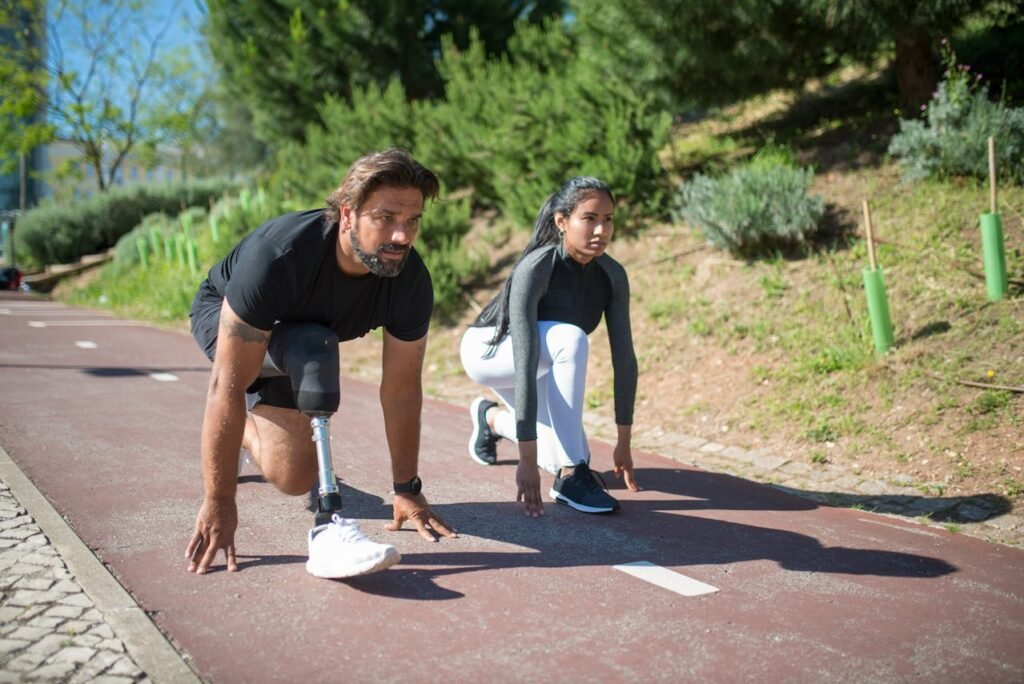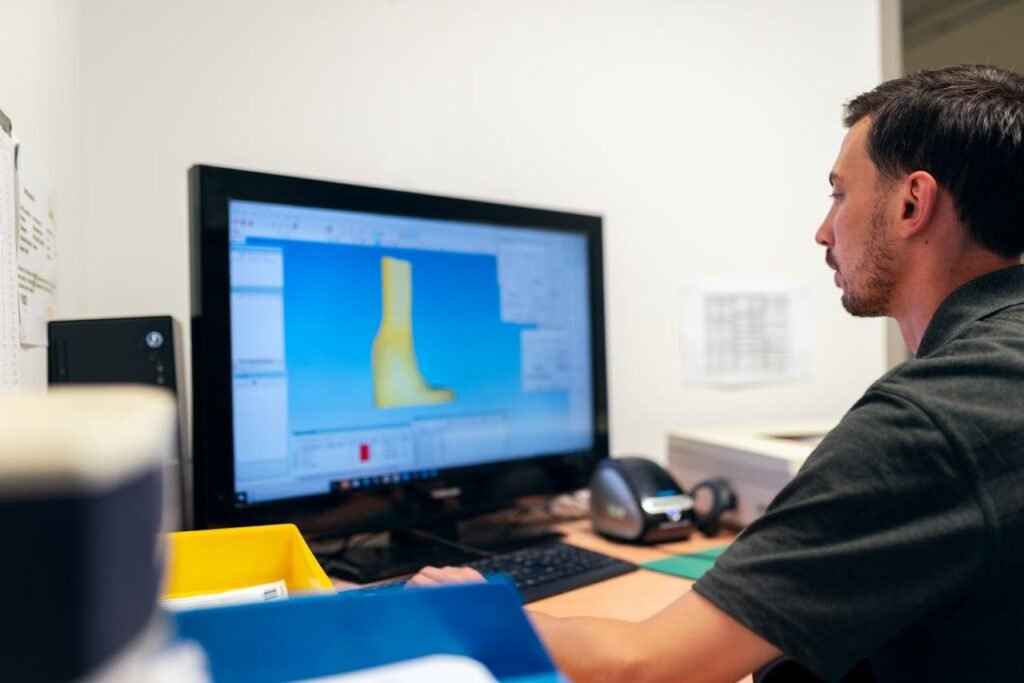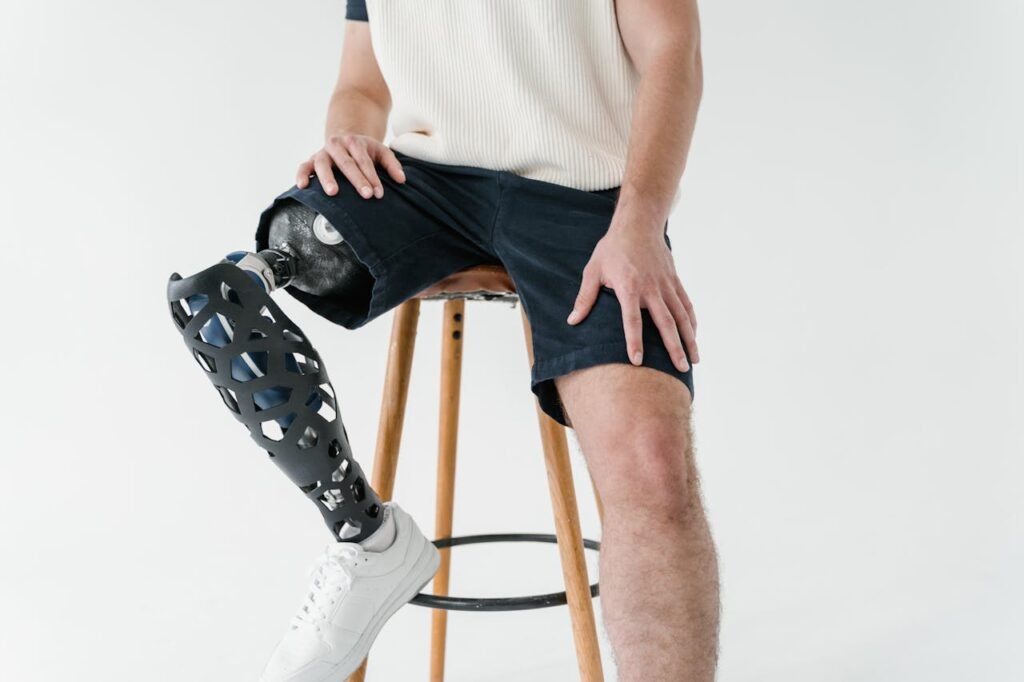Smart prosthetics are redefining the possibilities for individuals with limb loss, blending advanced technology with personalized design to create devices that go far beyond traditional prosthetics. These state-of-the-art solutions are designed to mimic natural movement, adapt to changing environments, and enhance the user experience in ways that were once unimaginable.
As we enter 2024, smart prosthetics continue to evolve, offering new features and greater accessibility for users around the world. Whether you’re exploring prosthetic options for yourself, supporting a loved one, or working in the prosthetics industry, understanding the features and costs of these innovative devices is essential.
The Evolution of Smart Prosthetics
Smart prosthetics represent the pinnacle of technological innovation in mobility aids. Unlike conventional devices that rely solely on mechanical systems, smart prosthetics integrate advanced electronics, sensors, and software to deliver intuitive and adaptive functionality.
A Leap Beyond Functionality
The goal of smart prosthetics is not just to restore basic movement but to provide users with a seamless and natural experience. These devices can anticipate user needs, adjust to varying conditions, and even offer sensory feedback, giving users a deeper connection to their prosthetic.
For businesses, the evolution of smart prosthetics underscores the importance of staying ahead of technological advancements.
Investing in research and development and collaborating with tech partners ensures that products remain competitive and relevant in this dynamic landscape.
The Role of Artificial Intelligence
At the heart of many smart prosthetics is artificial intelligence (AI), which enables devices to learn from user behavior and optimize performance over time.
For instance, an AI-driven prosthetic hand can analyze patterns in grip strength and finger positioning, refining its movements to better match the user’s intentions.
Businesses can leverage AI to create prosthetics that are not only functional but also deeply personalized. Offering users the ability to customize settings through apps or software enhances the overall experience and fosters long-term satisfaction.

Real-Time Adaptability
One of the standout features of smart prosthetics is their ability to adapt in real time. Embedded sensors monitor variables such as gait, speed, and terrain, allowing the device to adjust its mechanics instantaneously.
This ensures stability and comfort, whether the user is walking, running, or navigating uneven surfaces.
For businesses, showcasing the adaptability of smart prosthetics through demonstrations or interactive experiences can help users appreciate the value of these features. Highlighting how real-time adjustments improve safety and ease of use creates a compelling case for adoption.
Key Features of Smart Prosthetics
Smart prosthetics come equipped with a range of features designed to enhance mobility, independence, and quality of life. Understanding these features is crucial for users and businesses alike, as they often influence both performance and cost.
Intuitive Motion Control
Smart prosthetics use advanced motion control systems to replicate natural movement. These systems are powered by sensors that detect muscle signals or nerve impulses, translating them into precise movements. For example, a myoelectric arm can open and close its hand based on electrical signals from the user’s residual muscles.
For businesses, ensuring that these systems are user-friendly and reliable is paramount. Providing training and support to help users master these controls can significantly enhance their confidence and satisfaction.
Sensory Feedback
One of the most transformative features of smart prosthetics is sensory feedback, which allows users to feel sensations like pressure, texture, or temperature through their prosthetic device.
This is achieved through haptic technology, where vibrations or electrical signals simulate sensory input.
Businesses should focus on refining and expanding sensory feedback capabilities to make them more accessible and impactful. Collaborating with users during development helps ensure that these features meet real-world needs and expectations.

Connectivity and Integration
Many smart prosthetics now include connectivity features that link them to smartphones or other devices. Through dedicated apps, users can adjust settings, monitor performance, and receive updates or alerts. This connectivity also enables remote diagnostics and software updates, reducing the need for in-person visits.
For businesses, investing in robust app development and user support is critical for maximizing the potential of connectivity features. Ensuring that these platforms are intuitive and accessible enhances the overall user experience.
Costs of Smart Prosthetics in 2024
While smart prosthetics offer groundbreaking features and unparalleled functionality, their cost remains a key consideration for many users. Prices for these advanced devices vary widely based on factors such as the type of prosthetic, the level of technology, and customization requirements.
Understanding these costs is crucial for buyers and businesses alike to make informed decisions and ensure accessibility.
Factors Influencing Costs
Smart prosthetics are priced higher than traditional models due to the integration of advanced components like microprocessors, sensors, and software systems.
Additionally, materials like carbon fiber, titanium, and medical-grade silicone contribute to their durability and lightweight design, adding to the overall expense.
For businesses, transparent communication about these factors helps build trust with customers. Offering detailed breakdowns of what contributes to the cost—such as enhanced features, precision engineering, and extended warranties—ensures that users understand the value they’re receiving.
Customization also plays a significant role in determining costs. Devices tailored to fit an individual’s anatomy or specific activity needs often require additional time and resources, which can increase the price.
However, this personalization is essential for optimizing comfort and functionality, making it a worthwhile investment for many users.
Average Price Ranges
In 2024, the cost of smart prosthetics ranges from ₹5,00,000 to ₹40,00,000 or more, depending on complexity and features.
Entry-level devices with basic smart functionalities tend to be on the lower end of this spectrum, while high-performance models with advanced AI, sensory feedback, and connectivity occupy the upper range.
Businesses should be prepared to address affordability concerns by offering flexible payment plans, financing options, or collaborating with non-profits and government programs.
Highlighting the long-term benefits of these devices, such as reduced maintenance and enhanced usability, can also help justify the initial investment.
Balancing Cost and Value
For many users, the decision to invest in a smart prosthetic is about finding the right balance between cost and value. While the upfront expense may seem high, the improved quality of life, independence, and opportunities enabled by these devices often outweigh the financial considerations.
Businesses can support users in evaluating this balance by providing case studies or testimonials that showcase the real-world impact of smart prosthetics.
Demonstrating how the device has empowered individuals in work, sports, or daily life helps potential buyers see the broader value of their investment.

Actionable Advice for Buyers
Navigating the world of smart prosthetics can feel overwhelming, especially given the range of options and costs involved. For buyers, taking a strategic approach to research, evaluation, and decision-making ensures they choose a prosthetic that aligns with their needs and budget.
Define Your Goals
The first step in selecting a smart prosthetic is understanding your specific needs and goals. Consider how you plan to use the device—whether it’s for daily activities, specialized tasks, or athletic pursuits.
This clarity will help you identify which features are most important, such as sensory feedback, advanced motion control, or connectivity.
For businesses, offering consultations that guide users through this process is a valuable service. By asking targeted questions about their lifestyle, physical abilities, and future aspirations, you can recommend tailored solutions that align with their priorities.
Explore Financing and Assistance Options
Given the cost of smart prosthetics, exploring financing options is essential. Many providers offer payment plans that allow users to spread the expense over time, making these devices more accessible.
Additionally, government programs, insurance coverage, and charitable organizations may help offset costs.
Businesses should proactively educate customers about these resources, simplifying the application process or connecting them with relevant support networks. Offering flexible financing options in-house can also attract a broader range of buyers and demonstrate a commitment to inclusivity.
Evaluate Long-Term Support
When investing in a smart prosthetic, it’s important to consider the long-term support offered by the provider. Regular maintenance, software updates, and access to replacement parts are critical for ensuring the device remains functional and up-to-date.
For businesses, emphasizing after-sales support as a core part of the user experience helps build trust and loyalty. Creating service packages that include annual check-ups, troubleshooting assistance, or discounted upgrades ensures users feel supported throughout the life of their prosthetic.
Future Trends in Smart Prosthetics
The future of smart prosthetics is brimming with potential, driven by technological advancements and a growing focus on user-centric innovation. For businesses, staying attuned to these trends is vital for maintaining relevance and driving growth in this competitive space.
Enhanced Human-Machine Interfaces
One of the most exciting developments in smart prosthetics is the integration of neural interfaces, which enable direct communication between the user’s brain and the prosthetic.
This technology allows for more intuitive control and a seamless experience, as the prosthetic responds instantly to the user’s thoughts and intentions.
Businesses investing in this area should prioritize partnerships with researchers and institutions specializing in neuroprosthetics. By collaborating on pilot programs or clinical trials, companies can position themselves as pioneers in this cutting-edge field.
Sustainability and Accessibility
As the industry evolves, there’s a growing emphasis on sustainability and accessibility. Eco-friendly materials, energy-efficient manufacturing, and modular designs that reduce waste are becoming increasingly important.
Additionally, scalable production techniques like 3D printing are making it possible to deliver high-quality prosthetics at lower costs, expanding access to underserved populations.
For businesses, aligning with these values not only meets market demands but also enhances brand reputation. Transparent communication about sustainable practices and efforts to make smart prosthetics more accessible appeals to socially conscious buyers and strengthens customer loyalty.

Neuroprosthetics and Mind-Controlled Systems
One of the most exciting developments in smart prosthetics is the integration of neuroprosthetics, which use brain signals to control device movements.
This technology bridges the gap between thought and action, creating prosthetics that respond seamlessly to a user’s intent. Neural implants or surface electrodes detect brain activity, translating these signals into precise movements of the prosthetic.
Businesses have an opportunity to pioneer this field by investing in research collaborations with neuroscientists and universities. Establishing pilot programs to test these systems in real-world scenarios can generate valuable data and refine the user experience.
Marketing campaigns that highlight the potential of neuroprosthetics to restore autonomy and precision for users can position a company at the forefront of innovation.
AI-Driven Personalization
Artificial intelligence continues to shape the future of smart prosthetics by enabling devices to adapt to individual users’ needs dynamically. Beyond real-time adjustments, AI systems can analyze long-term patterns in the user’s movements, preferences, and environments.
This data allows the prosthetic to evolve alongside the user, optimizing performance and offering tailored recommendations for activities or rehabilitation.
Businesses can capitalize on this trend by incorporating robust AI systems into their prosthetic designs. Offering users intuitive interfaces to set goals or track progress enhances engagement and satisfaction.
Demonstrating how AI improves day-to-day functionality through user testimonials or simulations can create a compelling case for the value of these systems.
Modular Designs for Greater Flexibility
The future of smart prosthetics is moving toward modularity, where components can be swapped, upgraded, or tailored for specific activities. Modular designs allow users to customize their prosthetic for different scenarios, such as work, sports, or leisure.
This adaptability not only extends the device’s lifespan but also ensures it remains relevant as the user’s needs change.
For businesses, embracing modularity requires a shift in design philosophy. Creating standardized connections and universally compatible parts can simplify production and maintenance while offering users more choices.
Educating customers on the benefits of modular systems, such as cost savings and expanded functionality, reinforces the appeal of these designs.
Integrating Multi-Sensory Feedback
The next wave of smart prosthetics aims to replicate the full sensory experience of a natural limb. Advances in haptic feedback, temperature sensing, and texture recognition are making it possible for users to perceive their environment through their prosthetic.
This multi-sensory integration not only enhances functionality but also fosters a deeper emotional connection to the device.
Businesses should explore partnerships with material scientists and engineers to develop sensors that deliver accurate and nuanced feedback.
Offering demonstrations where users can experience these sensory features firsthand helps create excitement and understanding of their practical benefits. Additionally, focusing on user-driven customization of sensory intensity ensures these features meet diverse preferences.
Innovation in Smart Prosthetics
The landscape of smart prosthetics is not only expanding but also becoming more user-focused as advancements make devices increasingly adaptable and versatile. Beyond the groundbreaking features already discussed, several emerging trends are poised to reshape how users and businesses approach prosthetics in the coming years.
Artificial Intelligence for Predictive Adaptation
AI technology is rapidly evolving to go beyond reactive adjustments in smart prosthetics. Future devices may leverage predictive algorithms to anticipate user needs based on patterns of movement, environment, and physiological data.
For instance, a prosthetic leg equipped with AI could sense upcoming changes in terrain, such as a slope, and prepare its mechanisms to adjust accordingly before the user begins the transition.

Businesses should prioritize integrating AI-driven predictive features into their product lines to enhance usability and efficiency. Providing tools that allow users to calibrate these features to their preferences further personalizes the experience and increases satisfaction.
Marketing materials that illustrate these real-world applications, such as navigating complex terrains or improving athletic performance, can inspire potential buyers.
Cloud-Enabled Connectivity
Connectivity is becoming a hallmark of smart prosthetics, and the next step is cloud integration. Cloud-enabled prosthetics can sync with digital platforms to store usage data, track performance metrics, and provide diagnostic feedback.
These features enable both users and clinicians to monitor the device remotely, ensuring it remains optimized and addressing potential issues before they arise.
For businesses, embracing cloud technology provides an avenue for continuous engagement with users. Creating subscription services for premium features, such as extended cloud storage or personalized analytics, not only enhances the user experience but also generates recurring revenue.
Partnering with tech companies to develop secure and reliable cloud systems is a strategic move to stay ahead in the market.
Multi-Sensory Integration
Sensory feedback in prosthetics is advancing toward multi-sensory integration, where devices can replicate not just touch but also temperature, pressure variance, and texture sensitivity.
These advancements aim to provide users with a closer approximation of natural sensory experiences, improving their connection to the prosthetic and the environment.
Businesses that invest in this field should focus on designing intuitive interfaces that allow users to customize sensory feedback according to their needs.
Hosting workshops or webinars that showcase these features in action helps demystify the technology and demonstrates its practical benefits.
Building partnerships with healthcare providers to test and refine sensory systems ensures they meet clinical standards and user expectations.
The Business Perspective
The smart prosthetics industry offers a wealth of opportunities for businesses willing to innovate and align with user needs. Success in this market requires a combination of technical excellence, strategic foresight, and a deep understanding of the user journey.
Cultivating User-Centric Innovation
Innovation in smart prosthetics must begin and end with the user. Businesses should actively involve prosthetic users in the design and testing process, gathering insights that inform every aspect of development.
Creating feedback loops where users can share their experiences and suggest improvements not only enhances the product but also fosters trust and loyalty.
Investing in diverse research teams that combine expertise in biomechanics, AI, and user experience design can result in groundbreaking products that truly stand out.
Businesses that emphasize this commitment to innovation in their branding and communications can position themselves as leaders in the field.
Expanding Accessibility Through Strategic Partnerships
The high cost of smart prosthetics remains a barrier for many potential users. To address this challenge, businesses should explore partnerships with non-profits, government agencies, and philanthropic organizations.
Collaborative programs that provide subsidies, grants, or sliding-scale pricing models can expand access while maintaining profitability.
Additionally, businesses can establish partnerships with insurers to streamline the claims process for users, making it easier to secure coverage for smart prosthetics.
Clear communication about available financial assistance options enhances the company’s reputation for empathy and support.
Building Awareness and Education
Smart prosthetics represent a significant investment, and potential users often need guidance to understand their options and the value these devices provide.
Businesses should take an active role in educating both users and healthcare professionals about the features, benefits, and costs of smart prosthetics.
Hosting informational events, creating detailed online resources, and offering one-on-one consultations are effective ways to build awareness.
By positioning themselves as a trusted source of information, businesses can deepen customer relationships and encourage informed decision-making.

Conclusion
Smart prosthetics are revolutionizing mobility, independence, and quality of life for individuals with limb loss. By integrating advanced technologies like AI, sensory feedback, and cloud connectivity, these devices have moved beyond simple functionality to become intuitive and adaptive extensions of the human body.
For businesses, this transformative landscape offers both challenges and opportunities. Success lies in balancing cutting-edge innovation with a commitment to user-centric design and accessibility. By investing in research, fostering collaborations, and building trust with users, companies can shape the future of smart prosthetics while empowering individuals to achieve their full potential.
At Robobionics, we are proud to be at the forefront of this evolution. Our mission is to create smart prosthetics that combine technology, personalization, and support to transform lives.



